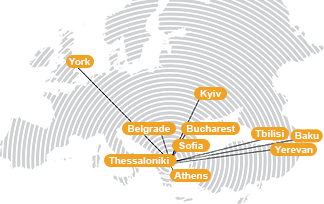The MORE project ("Multifunctional role of women as a key driver for rural development") aims to improve the access to, and the quality of, training opportunities and qualifications of rural EU women. The realities of women's lives in rural areas have become more diverse in recent decades. In today's society, women assume a "multifunctional role" in the multi-faced context of their families (i.e. child and elderly care) and social and labour ties. This multiplicity of roles contributes significantly to improvement of their families' quality of life, as well as rural socio-economic development, civic engagement, and ways of rethinking the territorial contexts.
According to the EU Parliament, the multifunctional role of women is essential to save rural areas in Europe, whose population is expected to shrink to almost 8M by 2050, in contrast with a fast-growing urban population that will reach 24M by 2050. Rural women still face serious disadvantages, compared not only to rural men, but also to urban women. Due to the structural drawbacks of local labour markets, women have to out-migrate from rural areas at a higher rate than men. Yet, for older generations, the domestic caregiver role is a significant barrier to mobility. Rural women are more dissatisfied with educational and employment opportunities in their regions. Moreover, they contribute significantly to the farming sector in terms of working time in agriculture. However, only 30% of farm holdings in the EU are officially owned by women. Most of the time, official documents, rights, and representation within farm associations or local groups are in the name of their male counterparts.
Here you can find more information about the project regarding the partners, the analysis, the resources and any related news.
Follow the project on social media accounts for more up to date news.






